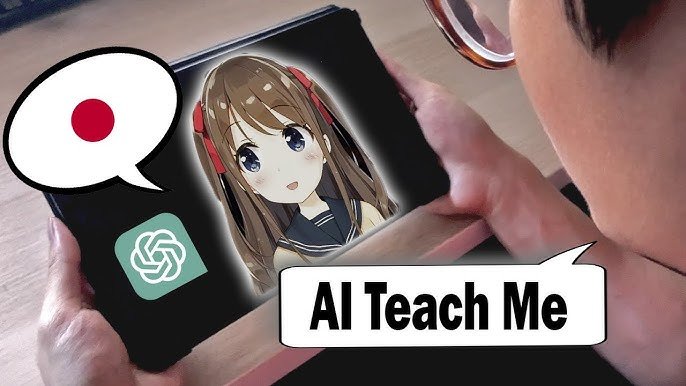How AI Tools Can Help You Learn Japanese Grammar Smarter
In the digital learning revolution, Artificial Intelligence (AI) has become a game-changer—especially for those learning foreign languages. If you're tackling the challenge of mastering Japanese grammar, you're in luck. AI tools today are designed to help you learn smarter, not harder. From personalized lessons to real-time correction, AI can transform your learning experience in ways traditional methods simply can't.
One of the most trusted platforms for structured learning with modern tech integration is TLS – The Japanese Language School. TLS combines traditional language instruction with smart tools and techniques—ideal for learners who want a guided yet flexible journey to Japanese fluency.
Let’s dive in.
Why Japanese Grammar Is Challenging (And How AI Can Help)
Japanese grammar is fundamentally different from English, presenting unique hurdles for learners:
- Particles (助詞 – joshi): Tiny words like は, が, を, and に are crucial for dictating sentence structure and meaning. Their subtle usage is often a major stumbling block.
- Verb Conjugations: Japanese verbs undergo numerous changes based on politeness, tense, formality, and more.
- Sentence Order: The common Subject-Object-Verb (SOV) structure is the inverse of English, requiring a complete re-wiring of thought processes.
- Contextual Nuances: Many phrases and grammatical patterns rely heavily on implied meaning and social context, making direct translation inadequate.
How AI Bridges the Gap
AI-powered tools help by addressing these challenges directly:
- Providing real-time corrections (like a virtual tutor): AI can instantly identify grammatical errors in your writing or speech.
- Generating personalized exercises based on your mistakes: AI algorithms analyze your performance and create targeted drills to reinforce weak areas.
- Breaking down complex grammar into digestible explanations: AI can offer clear, concise explanations with relevant examples for even the most intricate grammatical points.
- Offering speech recognition for pronunciation practice: Practice using grammatical structures verbally and get immediate feedback on your accuracy and fluency.

Top AI Tools for Learning Japanese Grammar
Here are some of the best AI-driven apps and platforms to accelerate your grammar mastery:
1. LingoDeer (Visit Site)
- Why It’s Great: Uses AI to tailor lessons based on your individual progress and learning pace.
- Grammar Focus: Breaks down particles, verb forms, and sentence structures with interactive exercises and clear grammar notes.
- Best For: Beginners to intermediate learners seeking a structured, adaptive curriculum.
2. Bunpo / Bunpro (Check Them Out)
Bunpo: https://bunpo.app/?lang=ja
Bunpro: https://bunpro.jp/
- Why It’s Great: Both are excellent, with Bunpo focusing on comprehensive grammar lessons and explanations, often structured for JLPT. Bunpro utilizes an AI-powered SRS (Spaced Repetition System) specifically for Japanese grammar points, ensuring long-term retention.
- Grammar Focus: Covers JLPT levels N5-N1 with clear explanations and targeted review.
- Best For: Structured learners preparing for JLPT, and those who benefit from spaced repetition for grammar retention.
3. Renshuu (Explore Here)
- Why It’s Great: AI customizes quizzes based on your weak areas and offers a vast library of user-generated content for real-life usage examples.
- Grammar Focus: Includes over 800 grammar expressions with native-written model sentences, construction diagrams, and a superior quiz system.
- Best For: Learners who enjoy community-driven content, customizable learning paths, and adaptive quizzing.
If you're struggling with connecting ideas in sentences, this guide on node grammar in Japanese clearly explains how to use ので to express reasons and causes.
4. DeepL Translate (Try It)
- Why It’s Great: Often more accurate and nuanced than other general translators for complex Japanese sentences.
- Grammar Focus: While not a learning app, it helps you dissect complex sentence structures and understand natural phrasing by comparing your Japanese input with its highly accurate English translation.
- Best For: Intermediate/advanced learners checking natural phrasing and understanding the subtle nuances of sentences.
5. ChatGPT (and Custom AI Tutors)
https://openai.com/index/chatgpt/
- Why It’s Great: You can ask, “Explain は vs. が with examples for a beginner,” or “Give me 5 example sentences using なければならない in a casual setting,” and get instant, personalized explanations. You can even set it to act as a Japanese tutor.
- Grammar Focus: Excellent for clarifying specific doubts, generating custom practice material, and receiving on-demand explanations tailored to your questions.
- Best For: Self-learners who need immediate, in-depth explanations and custom practice content.
To express purpose or indirect commands in Japanese, check out this detailed breakdown on how to use ように (youni) in Japanese grammar.

Practical Ways to Use AI for Japanese Grammar Mastery
Integrating AI into your study routine can significantly boost your grammar acquisition:
1. Instant Grammar Explanations Instead of scouring textbooks for answers, leverage AI for quick, precise explanations:
- "What’s the difference between てくれる and てもらう?"
- "Give me 5 example sentences using なければならない in a daily conversation."
- Pro Tip: Use ChatGPT, Claude AI, or Google Gemini for personalized breakdowns in plain English, often with multiple examples.
2. AI-Generated Quizzes & Drills Apps like Bunpo and Renshuu use AI to create adaptive quizzes. The more mistakes you make in a particular grammar topic, the more the AI reinforces that area with additional practice, ensuring mastery.
3. Real-Time Writing Corrections While still evolving for Japanese, tools like LanguageTool (Visit Site) are starting to offer more robust grammar checking capabilities. For now, you can also input sentences into DeepL or even ChatGPT and ask for corrections and alternative, more natural phrasing. This acts like having a virtual proofreader.
4. Speech Recognition for Grammar Practice Utilize features like Google Translate’s speak-to-text or Duolingo’s voice exercises to practice speaking full Japanese sentences. The AI can help you confirm if you're correctly producing the sounds and intonation for different grammatical structures. Apps like Talkpal and Langua offer more advanced AI conversation partners for this purpose.
5. AI-Powered Spaced Repetition (SRS) While Anki is a popular SRS tool, AI-enhanced SRS apps (like Bunpro and the built-in SRS in Bunpo or LingoDeer) adjust review frequency based on your recall strength. This means you review grammar points just before you're likely to forget them, optimizing retention.
Whether you're writing formally or casually, learn the right expressions with this practical guide on how to write emails and letters in Japanese.
Unique Insights: How to Maximize AI for Grammar Learning
To truly optimize your AI-powered grammar learning, consider these strategies:
1. Combine AI with Traditional Study Methods AI is a powerful supplement, not a complete replacement. Pair it with:
- Structured textbooks: Like Genki, Minna no Nihongo, or Tae Kim’s Guide to Japanese Grammar, for foundational understanding.
- Immersion: Consume Japanese media (anime, dramas, podcasts, reading materials) to see grammar used authentically.
- Human Interaction: Engage with native speakers through language exchange apps like HelloTalk or tutors for nuanced feedback that AI might miss.
2. Ask AI for “Real-Life” Examples Move beyond rote memorization by prompting AI for practical applications:
- "Show me 10 natural sentences using かもしれない (kamoshirenai, "maybe") in daily conversations."
- "Create a short dialogue between two friends planning a weekend trip, using 〜てしまう (te shimau, "to do completely/regrettably")."
3. Track Progress with AI Analytics Many AI language learning apps (e.g., LingoDeer, Bunpro) track your weak spots and progress over time. Regularly review these analytics to identify areas needing more attention and celebrate your improvements.
4. Use AI to Simulate Conversations Advanced chatbots (like those found in Talkpal, Langua, or even custom prompts in ChatGPT) let you practice grammar in a dialogue format. This low-pressure environment is perfect for experimenting with new grammatical structures and receiving immediate, non-judgmental feedback.
Add flair to your conversations by mastering these common Japanese idioms that reflect local wisdom and culture.
Potential Downsides & How to Avoid Them
While AI is incredibly powerful, be mindful of potential pitfalls:
- Over-reliance on translations: AI isn't perfect, and literal translations can sometimes miss the mark or cultural context.
- Ignoring fundamentals: AI is best for reinforcing and practicing, but a solid grasp of basic grammar rules from structured lessons is still crucial.
- Generic explanations: While AI can explain, sometimes it might lack the pedagogical nuance of a human teacher. Cross-check with trusted native sources or grammar guides if something feels unclear.
Solution: Use AI as a helper, not a crutch. Verify explanations, integrate it with diverse learning materials, and always seek to understand the why behind the grammar, not just the what. Verify with native speakers or experienced teachers when possible, especially for nuanced usage.
FAQs
1. Can you use AI to learn Japanese?
Yes, AI can assist in learning Japanese grammar, vocabulary, listening, reading, and speaking. It offers adaptive and interactive learning tailored to your individual pace and goals.
2. Why are AI tools useful in language learning?
AI tools provide instant feedback, adapt to your proficiency level, simulate realistic conversations, and break down grammar in simple terms—making language learning more efficient and engaging.
3. Can I use ChatGPT to learn Japanese?
Absolutely. ChatGPT can explain grammar concepts, correct your writing, simulate conversations, and create customized practice exercises—ideal for learners at any level.
4. What is the AI tool to learn English grammar?
Popular tools like Grammarly, QuillBot, and ChatGPT are widely used for learning and correcting English grammar. Some also support Japanese learning if prompted appropriately.
5. How can AI help with grammar?
AI detects grammar mistakes, explains rules, provides examples, and delivers personalized quizzes. It helps learners internalize grammar through interactive and real-time practice.
6. Which AI is best for learning language?
Some of the best AI tools for language learning include ChatGPT, SpeakPal, LingoDeer, Bunpo, and Renshuu. They offer personalized grammar instruction, speech practice, and adaptive exercises tailored to your progress.
Final Thoughts: Learning Japanese Grammar Smarter with AI
AI tools are genuine game-changers for Japanese learners. They provide instant feedback, personalized exercises, and deeper, on-demand explanations—making the once-intimidating world of Japanese grammar more approachable and conquerable.
However, the key is balance. Combine AI with immersion, traditional textbooks, and real-life practice for the most comprehensive and effective results. By strategically leveraging AI, you can unlock a smarter, more engaging, and ultimately faster path to mastering the beautiful complexities of Japanese grammar.











